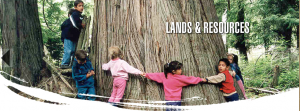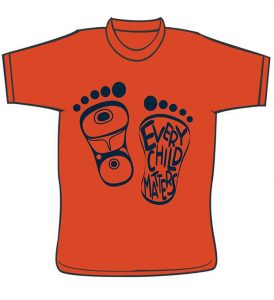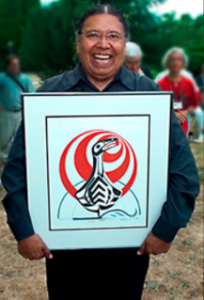1. I found this website interesting from the perspective of an educator who would like to give students in the classroom an overview of the First Peoples of Canada. This virtual exhibition provides information about the different societies, languages and population percentages and distribution in Canada, before moving to “An Aboriginal Presence” which gives a short biography on many notable Canadian Indigenous peoples, including Alwyn Morris, a gold and bronze Olympic medalist, and Buffy Sainte-Marie, who co-wrote a song I loved when I was younger titled, “Up Where We Belong” among many others. Included in the virtual exhibition are traditional knowledges and artifacts, as well as origins and archaeology. While the exhibition provides more information than an educator might want to show students (it takes quite a while to read through all of the materials presented) I think it has the potential to be a valuable resource in the classroom. I personally enjoyed the sections “An Aboriginal Presence” (as it gave brief biographies of notable First Peoples) and “We Are the Land” (both knowledge and experience) the most.
First Peoples of Canada [virtual exhibition]. (n.d.). Canadian Museum of History. Retrieved 9 November, 2016, from: http://www.historymuseum.ca/cmc/exhibitions/aborig/fp/fpint01e.shtml
2. The next link is to the “Anishnawbe Health Toronto” website. I am including this website because during a previous weblog entry (Module 2 Weblog, link #3), I found an article by O’Sullivan (2013) titled, “Considering Culture in Aboriginal Care” (link: http://m.cmaj.ca/content/185/1/E27.full.pdf). O’Sullivan’s article highlighted the difficulties encountered by Indigenous patients in the Canadian health care system including a lack of feeling of safety, acceptance, empathy and respect. In contrast, Anishnawbe Heath Toronto appears to do the opposite by providing a community health centre based on traditional Indigenous knowledges and traditions; “AHT offers access to health care practitioners from many disciplines including Traditional Healers, Elders and Medicine People. Ancient ceremonies and traditions, intrinsic to our health care model are available.” The “Overview & History” page shares that Anishnawbe Health Resources was founded in 1984, based on the vision of Elder Joe Sylvester. What originally began as a diabetes project, expanded to encompass the needs of Aboriginal health care in Toronto using a model that is based on culture and traditions. Today the mission of Anishnawbe Health Toronto is “To improve the health and well-being of Aboriginal People in spirit, mind, emotion and body by providing Traditional Healing within a multi-disciplinary health care model.” I feel this is an important resource because it demonstrates for me how traditional Indigenous cultures, traditions, and knowledges can be integrated with the theories of western medicine to provide for the health and well-being of the Indigenous peoples of Canada. It emphasizes for me the fact that we need to integrate Indigenous knowledges into all aspects of Canadian society, not simply into our classrooms.
Anishnawbe Health Toronto. (2011). Retrieved 12 November, 2016, from: http://www.aht.ca/
*Citation for previous article as listed on Weblog entry for Module 2:
O’Sullivan, B. (2013). Considering culture in Aboriginal care. CMAJ, 185(1). Retrieved 10 October, 2016, from: http://m.cmaj.ca/content/185/1/E27.full.pdf
3. The following link is to a powerful, but often extremely painful selection of stories from survivors of residential schools in Canada. Each of the forty-seven stories on the site is told in the form of an interview. Each survivor has his or her own story, but there are common threads throughout many stories that include feelings of community and safety before they were taken away from their families to residential schools, fear and a lack of understanding when being taken to and arriving at residential schools, and of devastating trauma caused by the many different forms of abuse suffered while at residential schools. Each story demonstrates the profound impact of residential schools on Indigenous peoples and their families, and the continued impact on their lives today. Please note before you watch any of these videos that there is a warning on the “Stories” home page due to the painful and disturbing subject matter in many of the videos. A contact number is provided on the home page for the Health Canada 24-Hour National Survivors Crisis Line if needed.
Residential School Survivor Stories. (n.d.). Legacy of Hope Foundation. Retrieved 10 November, 2016, from: http://wherearethechildren.ca/en/stories/
4. The following link is to a CBC News, “As It Happens”, written article and audio episode reporting on the Truth and Reconciliation Commission summary report. The written summary provides information about the report and appeals for “a nation-wide commitment to reconciliation” as it exposes the abuse, deaths and continuing trauma suffered by those who were taken from their homes and forced to attend residential schools. The article includes a summary of key recommendations from the 381-page report. The audio is accessible by clicking on ‘Reconciliation is not an aboriginal problem, it is a Canadian problem. It involves all of us’ on the left side of the screen. In doing this, you will be able to listen to the entire “Truth and Reconciliation Commission summary report coverage” portion of the June 2, 2015 episode of “As It Happens” which is 15 minutes and 51 seconds in length. The episode includes much of the information given in the written article, as well as providing some of the testimonies from Residential School Survivors during the Truth and Reconciliation Commission.
Off, C. and Douglas, J. (2015, June 2). Truth and Reconciliation Commission summary report coverage. As It Happens. Retrieved 9 November, 2016, from: http://www.cbc.ca/radio/asithappens/as-it-happens-tuesday-edition-1.3096950/reconciliation-is-not-an-aboriginal-problem-it-is-a-canadian-problem-it-involves-all-of-us-1.3097253
5. My final link is to a TEDx video titled “Changing the way we see Native Americans” that I found created hope. I was immediately drawn to this TEDx TeachersCollege talk by the opening video of a young Indigenous child watching video images of Indigenous peoples as they are portrayed by Hollywood and other major media sources. When Matika Wilbur began to talk, I was drawn to her message as well as the good and beauty that seemed to emanate from her. Her TEDx talk centered on the modern and mainstream view of Native Americans, based on stereotypical images that are created through major media sources. Her goal is to change the way that Native Americans are perceived. With this in mind, she created a project in 2013 called Project 562 which “seeks to photograph every Federally recognized tribe in the United States and reveal in a brilliant spectrum of art, media, and curricula, the rich and complex twenty-first century image and reality of contemporary Native Americans.” During her talk, Matika Wilbur questions, “How can we expect mainstream support for sovereignty, self-determination, nation-building, tribally-controlled education, health care and jobs, when 90% of Americans only view people, my people, as one dimensional stereotypes situated in the historic past, or even worse situated in their imaginations. I argue that we can’t.” (time stamp: 11:38). Matika seeks to create positive change by identifying contemporary Indigenous role models, and to connect us together so that we can learn to respect and honour one another.
Wilbur, M. (2014). Changing the way we see Native Americans [online video]. TEDx TeachersCollege. Retrieved 10 November, 2016, from: https://www.youtube.com/watch?v=GIzYzz3rEZU




